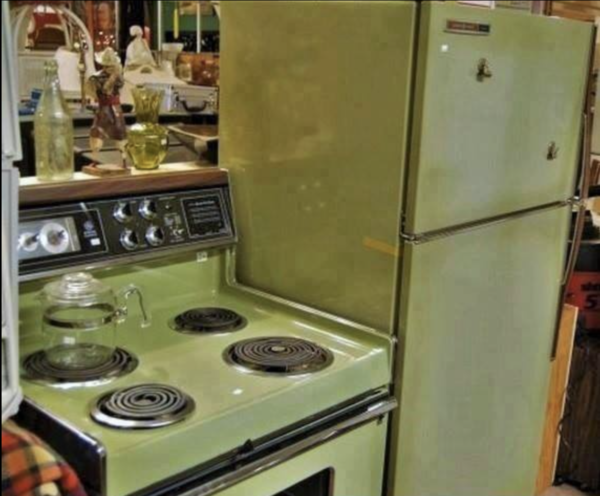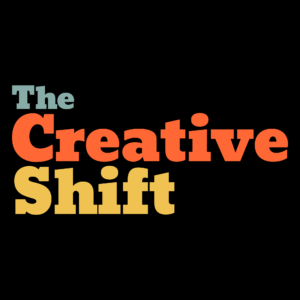In 2005, I was working in a gray cubicle at a magazine publisher and media company on Park Avenue South in New York City. At the time I worked in the Corporate Communications department, and one of our big responsibilities was sending out an internal newsletter to thousands of employees every Tuesday.
I had become fascinated with social media, blogging, and how the internet was changing publishing. I primarily worked with writers at the time. To this day my work focuses on helping writers and creators share their work and connect with readers in a meaningful way.
At that time back in 2005, I asked my boss if I could write my own newsletter and send it out to anyone who wanted it every Friday. Surprisingly, she agreed. She and I still keep in touch, and I’ve always appreciated how that moment changed my career. I needed permission to start a newsletter back then.
I walked around to the desks of 9 people I knew inside the company and asked them if I could send them the first issue of my newsletter. They agreed, giving me the support I was so desperately looking for. Nowadays, people fret over how to grow their list, but I always remember that anything we do today is SO MUCH EASIER than having to physically walk up to someone to pitch your newsletter to them, then wait for their reply.
After I sent the first issue, one of my colleagues who received it suggested that I send it to the CEO. My colleague was a lawyer within the company, and super smart. But I told him “NO WAY.” The idea of pitching an idea to the CEO seemed to be more filled with potential loss, than potential gain to me. I just wanted to write my newsletter, fly under the radar, and let it organically move from person to person. Without batting an eye, he gave me an ultimatum: “If you don’t send it to him, I will.”
Ugh. Fine.
I asked my boss if I could tell the CEO about my newsletter, and she agreed. This is what happened next, the most harrowing few minutes of my career up to that point (and maybe since):
- I nervously forwarded my newsletter to the CEO, blaming the lawyer who suggested it as “Jeremy felt you would be interested…”
- A couple minutes later the CEO walked out of his office, past my cubicle, into my boss’s office, and shut the door.
- A few minutes later he left.
- My phone rings… it’s my boss. She says flatly, “Dan, can you come into my office?”
I’m not kidding, I was 100% convinced I was getting fired. At the time, I knew how delicate life can be in corporate culture. That you had to “innovate,” but also firmly fit in. This was years before social media would encourage everyone to share their “status.” I had a sinking feeling that my voice rising up from that gray cubicle in a newsletter that I alone controlled was a step too far.
When I sat down in my boss’s office though, I was floored. “The CEO loves your newsletter and thinks everyone in the company should subscribe. He’s forwarding it to the entire staff, encouraging them to do so.”
I mean, I am getting emotional just typing that. And here is why: I don’t take support for granted. I know many (most?) people don’t get support for the work that they love.
I remember talking to my dad at the time about the support I was getting at work, and he encouraged me to remember how lucky I was to be in that situation. He told me how I could be taking the same actions, but in a different company that didn’t value my ideas or independence, and I would find my career going in a much different direction. My dad had always been ridiculously supportive of me, and his reminder was meant in that manner. His most common advice he has ever given me is this: “Be aware of your surroundings.” He would tell me that in my teens and twenties when I would go out at night, and he meant the same thing here as it related to my career. Be aware of your surroundings, because that will protect you from harm, and allow you to find growth.
From the CEO’s email, I instantly gained around 700 subscribers, a huge leap from 9. Each week for the next several years, I sent out that newsletter. Inside the company, my profile was raised. Many people looked forward to my newsletter. But I’m not unaware that some people disliked me for it. Since my newsletter dealt with how the internet was changing the core business of our publishing company, there were plenty of employees who were NOT happy about this, and not appreciative of my upbeat missives on these changes. They also didn’t appreciate my independence to write and publish whatever I wanted. Some would have preferred if each issue of my newsletter would have been vetted by someone else in the company, to ensure every word aligned to existing company strategy.
But of course, there were benefits. I was recruited into a new role within the company, one that put me in charge of developing and managing a blogging strategy that would eventually include training hundreds of our reporters to blog, and another 100+ external industry experts to blog for our brands as well. I then did the same thing for the social media strategy across dozens of brands.
Then we heard that our company would be divested by our parent company. This process would end up taking years. I knew that my role would eventually be eliminated as the company itself went away, so I began creating a plan to bring my newsletter outside of the company. I did this slowly and carefully, over the course of many months. This included creating a blog presence, using social media, and then transferring my newsletter to a service that I managed.
At first I used Aweber as the hosting platform, then several years later moved to Convertkit. What drew me to Convertkit was the ability segment and tag email lists, to create automations, and other more advanced marketing tools. I would use some of these in the courses I ran over the years.
Every single week for more than 18 years, I have sent out this weekly newsletter. It has become such a core part of my life, living with that weekly deadline. It has always felt like an encouragement to write and publish. I can’t imagine a week without it, it gives me so much joy.
My newsletter has grown slowly over the years, and I have always been satisfied with Convertkit, just as I was with Aweber. But then came Substack.
What has been interesting about Substack that would make me want to switch? This:
- A sense of community among writers and readers. Substack has put a huge focus on this, encouraging people to not only share one newsletter, but others in the Substack ecosystem. This feels baked into the entire platform in a manner that I have’t seen other email services try, or be successful with.
- Substack’s focus on the biggest issue facing newsletters: growth. So they have developed a lot of tools to help spreads the word about someone’s newsletter through recommendations and other methods.
- This platform feels like a celebration of writing. Of course, this has always been the case with newsletters — they are based on writing — but Substack seems to really be recognizing the role of the writer in a bigger way, and that simply feels good.
- Promoting the idea that writers can get paid for their writing. This is one of the biggest shifts I have seen Substack have. Their system encourages readers to either pay for a newsletter via donation, or to pay for exclusive content or access. This is not some “advanced” feature that only “power users” are encouraged to use. When you sign up for a free account, right away new subscribers are asked if they want to donate money each month to support the newsletter.
- Of course, this is also Substack’s own business model. They don’t charge for their service with a monthly fee, instead they take a cut of revenue generated through paid newsletter subscriptions. I don’t know if that is better or not, but I find it fascinating that their success is reliant on writers’ success.
- They are building out an ecosystem very quickly, and rolling out new ideas one after another. For example, they recently launched their own social network called Notes. Does it feel “done” yet? Nope, it feels like a soft launch to a very basic product. But… has it also felt fun and refreshing? To me, it has. And it also encourages me to want to use Substack even more, because they are making it more social.
- Let’s face it, Substack has been a trend. People don’t say “I launched a newsletter.” They say, I launched a Substack.” That can have meaning in terms of how people talk about newsletter and spread the word.
I have also spent a long time working with writers on their Substack newsletters in the work I do every day. So I have helped set up many of them, and seen how their newsletters have gained traction, an audience, and revenue. It’s been nice seeing that from behind-the-scenes, not just flashy headlines.
But I hesitated in moving to Substack for quite awhile. Here’s why:
- The lack of total control of the newsletter template. I really like how simple Substack keeps their template. But, I tend to prefer a newsletter that is flush left on the page, looking more like a traditional email. This is a tiny point, but one that kept making me hesitate.
- The Substack newsletter would no longer come from my own email address (dan@wegrowmedia.com), and instead come from danblank@substack.com. Honestly, there could be many pros to this switch, but again, it simply made me hesitate.
As you can see, the pros far outweighed the cons, so I made the switch to Substack a couple weeks ago. You can see it here. So far, there have been zero negative surprises, and it has been a generally positive experience.
Since Substack encourages you to give your newsletter a title, I had to consider what mine would be, and what a logo for it would be. My newsletter hasn’t had a name in years. Instead of reinventing the wheel, I quickly whittled down the options for a name from two other names I had been using previously:
- The Creative Shift has long been the name of my podcast.
- Share Like it Matters was the name I was using for a program I had been beta testing and had mentioned publicly in the past.
I ran a poll to my newsletter subscribers asking their preference, and while it was close, The Creative Shift won out.
For creating a logo, I did a deep dive into the imagery that inspires me. Since I turned 50 this year, I have been thinking a lot about the era I grew up in. What imagery inspires me? Well, if I’m honest, this:

Yes, a 1970’s avocado colored kitchen like the one I grew up with. As I explored the colors I wanted to use for the logo, I would do research online, and created a series of 1970s living room images using AI:

When it came to the logo itself, I did keep it simple, just letters without images or graphics. This is the final logo:

If you aren’t already subscribed, please consider subscribing to my Substack newsletter, or sharing with with writers or creators who you feel would appreciate it. I look forward to another 18+ years of sending out weekly newsletters!
Thanks.
-Dan
